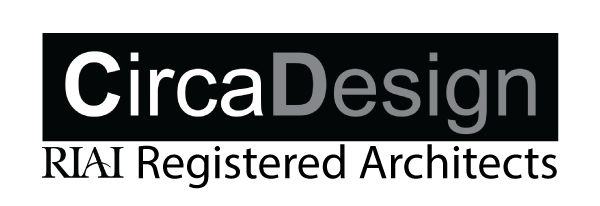Improving Energy Efficiency
Improving energy efficiency has become a key issue for building owners and occupiers with rising energy prices and colder winters. There are many solutions available on the market but not all are cost-effective, as many come with a long-term payback.
Working with a registered RIAI architect will help you identify the most cost-effective and beneficial solution for your home. Architects are professionally educated in building design and designing for greater energy efficiency is an essential part of their training.
Building Energy Rating (BER)
If your home does not already have a Building Energy Rating, your architect will conduct or commission a BER. This will give you an indication of the overall energy performance of your home as well as identify areas of improvement.
Retrofit Solutions
Solutions for better energy efficiency that you will discuss with your architect may include:
- Insulating external or internal walls for better thermal performance – your architect will advise on the best option and on any planning requirement
- Upgrading of windows to improve the thermal performance and reduce heat loss, also known as U-values. For example, upgrading an existing sunroom or conservatory with triple glazing can ensure that it can be used all-year-round.
- Improving the air-tightness of your home to avoid unwanted air leaks. Commonly an air pressure test is used to identify air leaks.
- Fitting of renewable energy sources such as solar collectors for hot water, wood pellet boilers or heat pumps. As these are expensive additions, your architect will advise on the payback implications.
- Remodelling your home for better orientation to benefit from light. Your architect may recommend changes to the layout or opening up a south-facing wall to benefit from sunlight, also known as passive solar gain.
What is a BER?
By law, anyone renting or selling a property must supply a Building Energy Rating (BER). A building energy rating calculates the energy efficiency of a property on a scale from A to G, with A1 being the most energy efficient and has the lowest energy bills. A BER covers energy use for space heating, water heating, ventilation and lighting calculated on the basis of standard occupancy. A BER certificate is accompanied by an advisory report, which will identify how you might improve the energy performance of your home. There are exemptions for certain categories of homes, for example, protected structures and certain temporary homes.
The Sustainable Energy Authority of Ireland
The Sustainable Energy Authority of Ireland (SEAI) has a wide range of information and publications aimed at the homeowner on improving energy efficiency. SEAI also have grants available to retrofit homes for greater energy efficiency. Your RIAI architect will advise you on these grants and the options for improving the energy efficiency of your property.
Top Tips on Energy Efficiency
Everyone who sets out to improve the energy performance of their home wants to find the best and most cost effective improvements that are appropriate to their needs and their budget. With a wide range of energy efficiency measures to choose from, how can we make the right choices and avoid making expensive ‘eco-bling’ mistakes?
According to RIAI architect and energy expert, William Scott, common mistakes in the refurbishment of Irish homes include:
- Replacing old windows and doors with modern, well-sealed units and blocking up of fireplaces without providing alternative ventilation. “A lack of adequate ventilation in home will lead to a build up of humidity, condensation and mould growth and a consequent risk to occupants’ health”, warns William Scott.
- On the other hand, making a big investment in wall and roof insulation or a high efficiency boiler will be largely wasted if sufficient attention is not given to preventing unwanted draughts, which will draw a lot of heat energy out of the house.
- High tech ‘green solutions’ – such as heat pumps – can be costly and often unnecessary, rather than focusing on the prevention of draughts and efficient and well-controlled hot water systems.
Top Tips for a Successful Energy Refurbishment from William Scott
- The best strategy is to identify the issues that are relevant to the particular home and develop an overall energy efficiency plan for the short term as well as for the longer term – to suit your budget. Your RIAI Architect will be able to advise on this.
- There are many immediate and inexpensive measures that can be undertaken in the home, such as using energy efficient light bulbs.
- Good long-term measures include the replacement of windows and the installation of wall insulation, however, these measures should be considered holistically and with the advice of an architect.
- Get expert advice when planning your energy refurbishment to save in the long-term.
- Piecemeal refurbishment without an overall consideration of your home can lead to unforeseen and unwanted consequences as well as unnecessary expenditure.
